
Wildlife damage biologist helps homeowners identify mystery visitors
My cell phone started ringing earlier than usual. Caller ID indicated it was coming from Wentzville.
“Help!” a terrified voice said. “We found huge piles of scat in our backyard and neighbor’s yard, our trash cans were knocked over, and trash spread everywhere.”
Contacts like this are an everyday occurrence in the life of a wildlife damage biologist. My job is helping people with wildlife concerns and coexisting with wildlife. To help solve issues and answer questions, properly identifying the culprit is the first step. Being successful in my job requires being a good detective. And frequently the best evidence left behind is the animal’s feces, or scat.
An animal’s scat provides unbeatable insights into its diet and behavior. Scat identification can be difficult, as scat changes according to what food is available, content of that food, and age and health of the animal. However, by asking the right questions, you can go a long way toward reducing the number of available suspects and determining the guilty critter.
In the case above, the caller went on to provide additional information that might be helpful in identifying the source of the scat, going as far as to even supply a suspect by name — Bruno, a black bear that made headlines in 2020 when his travels from Wisconsin to Arkansas took him through the St. Louis area.
“We live in a subdivision surrounded by woods, and we have seen deer, coyotes, foxes, and raccoons,” said the caller. “We are very concerned for the safety of the young children and pets in the neighborhood. We have been out west to Colorado several times. Based on what I saw there and the size of the scat piles in the yard, it must be a bear. We did have a bear close to us last summer, could it possibly be Bruno?”
Evolving Scat Piles
Later that same morning, I received an email that showed people are interested in knowing what is using their yard as a toilet.
“On April 29, I noticed a pile of poop in my yard, rather close to the front porch,” the email began. “And it was not huge, but bigger than what I have ever seen from any dog. I took a picture, scooped it up, and tossed it across the road. Next day, just about the same spot was another pile. The next day, more poop, but a little farther away from the house and right next to my fire pit. Same size, just a little different.”
The writer went on to describe how the scat piles continued to show up overnight throughout the summer and into the fall. As the seasons changed, so did the scat.
“The poop seemed to change — same size pile but a little different color and consistency,” the email read. “The piles of poop are everywhere except they are much different in shape and size. Could this be a different animal?”
Chocolate-Covered Almonds
Later the same day, a message came from Ask MDC (askmdc@mdc.mo.gov):
“We live in Macon County just north of 36 Highway,” the message read. “While out checking fence on our farm, we found these massive piles of pellets of scat all over our property shaped just like a deer scat, but they are way too big to be from deer. We have collected samples and took pictures; they are about the size of a chocolate-covered almond.”
Before you begin to identify scat, consider the health hazards associated with it and be safe. Animal feces are dirty and have germs. Avoid handling without proper protection and avoid inhaling near the droppings, as some diseases, especially histoplasmosis in bat and bird droppings, can be transmitted through the air. If you handle scat, use a tool and proper personal protective equipment, or PPE, a term with which we have recently become familiar. Use gloves and masks and remember to wash your hands afterward.
There are many common and slang terms for the same thing: scat, droppings, feces, dung, manure, stools, crap, poop, and others. All are defined as the solid or semisolid remains of food that was not digested in the small intestine and has been broken down by bacteria in the large intestine.
When trying to determine the source of scat, there are several clues to look for:
- Shape — Most wildlife scat will appear in one of four general shapes: plop, tubular, twisted, or pellet.
- Content — Can you determine what’s in the scat? The presence of seeds, bones, fur, insect parts, vegetation, grass, garbage, or plastic can lend insight into the animal’s diet.
- Color — The color of the scat can also help determine the general diet of the source. Is it brown, green, white, or black?
- Volume — Does the scat appear as a single dropping, or as a collection of several droppings? Some animals, especially otters and raccoons, will use the same location and form a latrine.
- Scent — A strong scent could indicate freshness.
- Contextual — Did the source take any extra steps after leaving the scat. Are there scrapes or scratches, or an attempt to cover the scat?
- Placement — Some animals defecate in prominent places, such as on logs, on top of rocks, or in the middle of a trail, in part to mark their territories.
- Habitat — Knowledge of the habitat can eliminate many possibilities and help with identification.
Title
PLOP
Black Bear
- Content clues: plants, insects, fish, bones
- Color: black, brown, green
- Volume: up to 1lb
- Placement: trails, tree bases
Horse
- Content clues: grass, hay
- Color: dark green, brown
- Volume: large fecal balls
- Placement: anywhere in fields, pastures
Cow
- Content clues: plant materials
- Color: green to black
- Volume: large piles
- Placement: anywhere in field, pastures
Title
TUBULAR
Coyote
- Content clues: fur, bones
- Color: dark to bright
- Volume: large volumes
- Placement: trails, boarders of their territory
Raccoon
- Content clues: seeds, very pungent odor
- Color: varies with diet
- Volume: 3/4 inch
- Placement: latrines — use of same location
River Otter
- Content clues: fish scales, crawdad and shell parts
- Color: black
- Volume: large, latrine
- Placement: mark territory along shoreline
Title
PELLET
White-Tailed Deer
- Content clues: plant materials
- Color: black to greenish
- Volume: large amounts of pellets
- Placement: everywhere
Elk
- Content clues: plant and woody materials
- Color: black to green
- Volume: similar to deer but even larger
- Placement: everywhere
Grey Squirrel
- Content clues: plant materials
- Color: brown to reddish
- Volume: 8-10mm length
- Placement: random
Simple Steps to Avoid Wildlife Conflicts
As more of us take up residence in rural areas and as metropolitan areas continue to expand into previously undeveloped areas, the prospect of conflicts between humans and wildlife increases. Residents can take a few simple steps to reduce the likelihood of those conflicts:
- Keep pet food inside and cover up doggie doors at night.
- Don’t give wildlife the opportunity to get into your garbage. Store garbage in metal or plastic containers with tight-fitting lids. Keep the containers in a garage or shed, and only put them out on your scheduled pickup day.
- Bring bird feeders in at night.
- Keep your yard free of brush and refuse to reduce rodents and rabbit populations.
- Clean your grill after each use.
“Could It Be Bruno?”
Missouri’s black bear population is on the rise, and with it, more cases of nuisance bears. As the black bear population increases, so does the bears’ range, with males leading the way into new territory. Bears have been reported and documented in the greater St. Louis area.
We discussed the pictures of the scat, knocked over trash cans, and previous wildlife sightings. The scat was described as amorphous, and the content was a mix of natural pieces and plastic undigested material. There was a large volume and strong scent. Another thing taken into consideration was the lack of bear sightings in a very populated suburban neighborhood. There had been several recent coyote sightings, and the trash cans were merely knocked over, not mangled and destroyed like a bear could do. There were no bear tracks anywhere, and by the time the scat was reported, Bruno had been reported in southern Arkansas.
After explaining how survival instincts lead certain animals, especially coyotes, to gorge themselves and eat until all the food — or garbage in this case — is gone, even when they are full, we discussed how this could most certainly result in extra-large piles of scat. And the very strong scent was probably from the rotten meat in the garbage. Based on the evidence, the scat was likely left by coyotes, and I advised the caller how best to avoid attracting unwanted wildlife to their yard and neighborhood (see Simple Steps to Avoid Wildlife Conflicts).
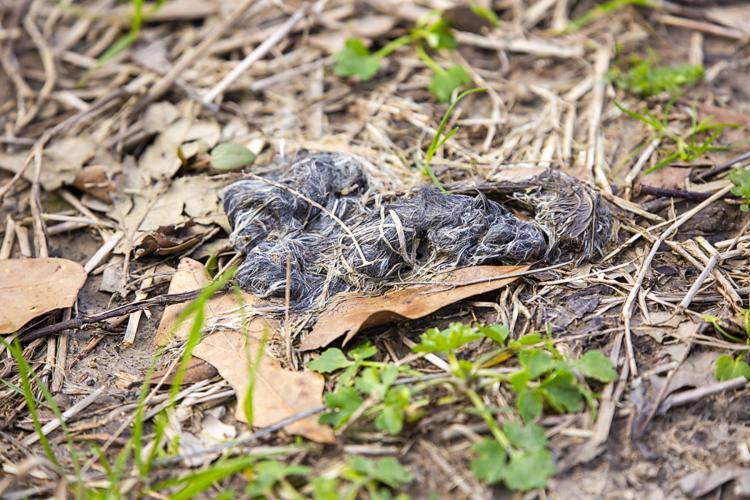



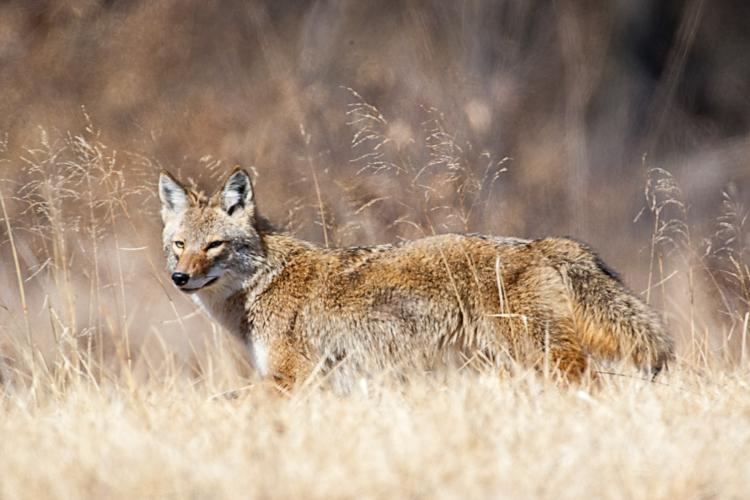





“The Recurring Scatter”
The investigation begins with the evidence we have. We examined the photos and discussed over the phone the one thing that was obvious: the scat changed from spring into fall. It went from a wet pellet shaped into a bigger plop to a pile of dry pellet-shaped scat. How could this possibly be from the same animal? This turns the investigation into what effects scat the most — diet.
The diet for deer changes depending on availability and season. In the spring through summer, they eat soft green browse. As the season turns to fall, there is less and less green browse, so they change to hard woody browse — acorns and twigs. This would explain how the same animal’s scat can look so dramatically different, and this is what solved the mystery of the changing poop piles and identified the culprits — white-tailed deer.



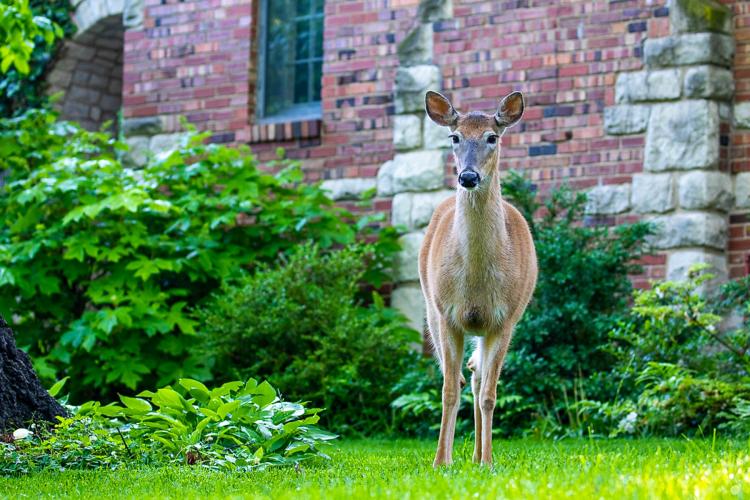



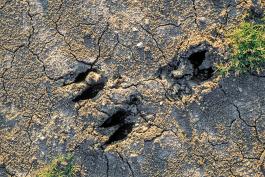




“Chocolate-Covered Almond Dropper”
The evidence here was pellet-shaped scat about the size of chocolate-covered almonds. What other animal has pelletlike scat? There is a group of animals called ungulates that typically have pellet-shaped scat. That group includes moose, elk, and deer. Non-ungulates with pellet-shaped scat, but much smaller, include rabbits, squirrels, and chipmunks. We ruled out most of the pellet-pooping critters based on size, leaving us with elk or moose.
The next evidence we looked at was the location. It is highly unlikely a moose could travel unnoticed from the northern states of Minnesota or Michigan. Moose scat is also much larger than the described evidence. Therefore, by the process of elimination, that left us with elk. The landowner asked if it could be an elk from the newly restored population in the Ozarks. Again, the prospect of an elk travelling from the lower Ozarks to northern Missouri unnoticed is improbable. Further investigation by the landowner discovered trail camera photos of an elk with cattle tags in its ears. With that information and the help of social media, he found the owners of the elk, which had escaped from an elk ranch nearly 50 miles away.
Scat Detectives
The next time you are out and about in your yard or anywhere in the great outdoors, apply the lessons above to any pile of mystery poo, and you might be able to identify the source — and become a scat detective.

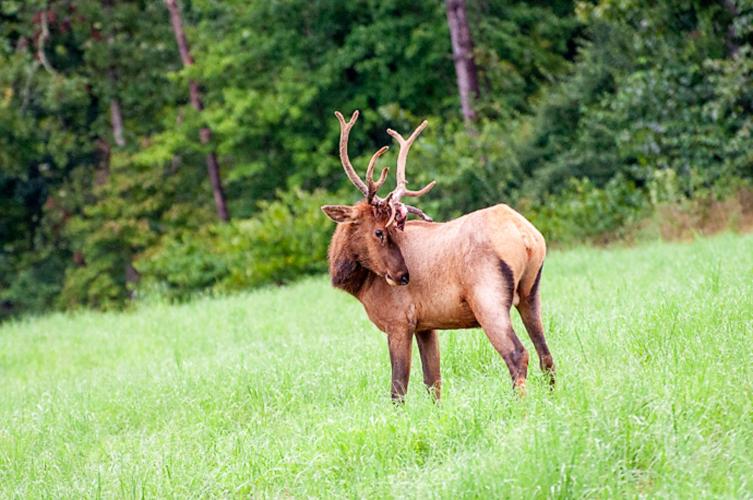
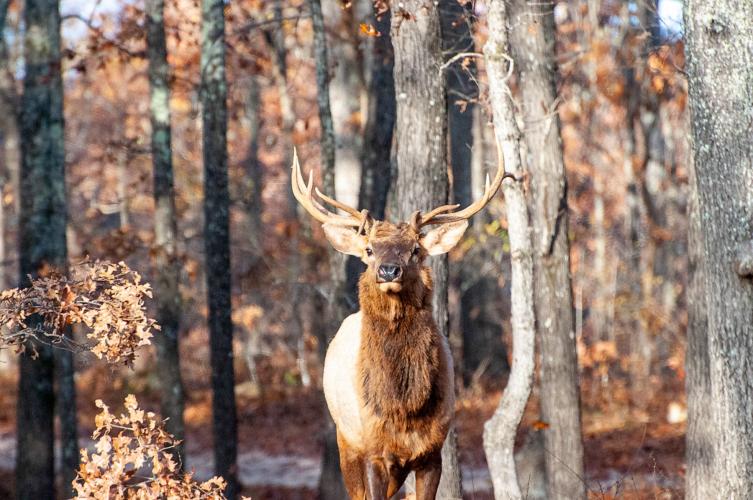













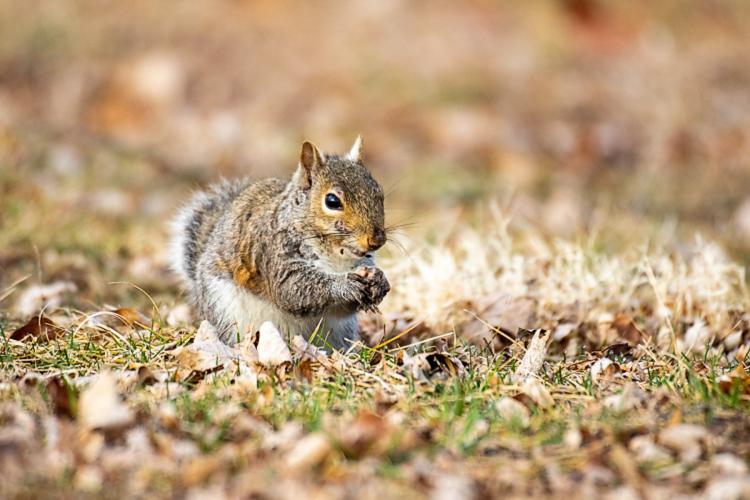



















Also In This Issue

Nature-based kindergarten takes learning outside.

Missouri’s quail restoration landscapes
And More...
This Issue's Staff
Stephanie Thurber
EDITOR
Angie Daly Morfeld
ASSOCIATE EDITOR
Larry Archer
PHOTOGRAPHY EDITOR
Cliff White
STAFF WRITERS
Bonnie Chasteen
Kristie Hilgedick
Joe Jerek
DESIGNERS
Shawn Carey
Marci Porter
PHOTOGRAPHERS
Noppadol Paothong
David Stonner
CIRCULATION MANAGER
Laura Scheuler






















